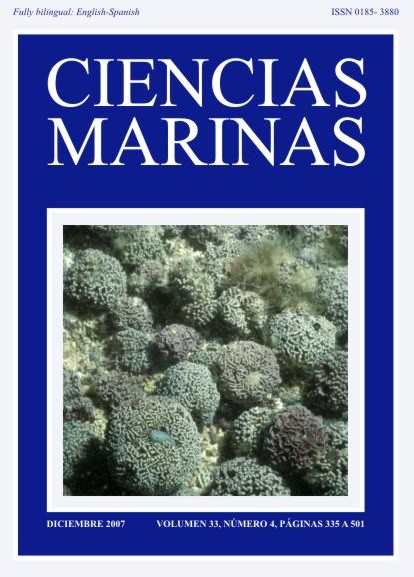Coastal evolution from transgressive barrier deposit to marine terrace on Isla Coronados, Baja California Sur, Mexico
Main Article Content
Abstract
This contribution describes and discusses the development of the Isla Coronados Pleistocene coastal deposits. The south side of the 700,000–160,000 year-old volcanic cone on Isla Coronados (Baja California Sur, Mexico) forms a shelf that converges on older Miocene andesite from the Comondú Group. Later Pleistocene carbonates accumulated on and around the antecedent topography as related by stratigraphic sections strategically located with respect to small andesite islets that formed a fixed barrier along the outer margin of a large lagoon at the foot of the volcano. Distinct facies show the progressive foundering on the island and the infilling of the lagoon about 121,000 years ago during events correlated with marine isotope substage 5e. On the seaward side of the barrier, a basal conglomerate of andesite boulders and cobbles grades into limestone with a diverse shelly fauna and whole rhodoliths in a matrix of rhodolith sand. Similar limestone is found on the lagoon side of the barrier, but features the bivalve Pina corteziana from a sheltered environment. Other facies are represented by populations of the coral Porites panamensis at different levels of growth and integration. Biocalcarenite derived from the debris of crushed rhodoliths occurs as the most extensive facies in terms of area and thickness. Sheeted layers that dip 20º off the top of the islets toward the volcano are regarded as washover deposits typical of barrier systems. A cobble pavement, interpreted as a ravinement surface, marks a widespread unconformity at the top of the biocalcarenite. This surface was the foundation for a short-lived rocky-shore biota in transition to dense growth of branching P. panamensis. The sequence ends with a thin marine terrace deposit that buried the coral thickets at the present 12-m level.
Downloads
Article Details
This is an open access article distributed under a Creative Commons Attribution 4.0 License, which allows you to share and adapt the work, as long as you give appropriate credit to the original author(s) and the source, provide a link to the Creative Commons license, and indicate if changes were made. Figures, tables and other elements in the article are included in the article’s CC BY 4.0 license, unless otherwise indicated. The journal title is protected by copyrights and not subject to this license. Full license deed can be viewed here.

